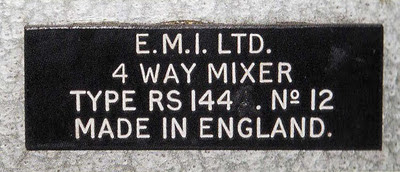Recording The Beatles

The Studio Equipment and Techniques Used to Create Their Classic Albums
Kevin Ryan and Brian Kehew
537 pages, Curvebender Publishing (2006)
"Recording The Beatles : The Studio Equipment and Techniques Used To Create Their Classic Albums" is a book by Kevin Ryan and Brian Kehew, published by Curvebender Publishing in September 2006.
The book addresses the technical side of "The Beatles"' sessions and was written with the assistance of many of the group's former engineers and technicians.
The book looks at every piece of recording equipment used at Abbey Road Studios during "The Beatles"' sessions, including all microphones, outboard gear, mixing consoles, speakers, and tape machines.
Each piece is examined in great detail, and the book is illustrated with hundreds of full color photographs, charts, drawings and illustrations.
How the equipment was implemented during the group's sessions is also covered. The effects used on "The Beatles"' records are addressed in great detail, with full explanations of concepts such as ADT and flanging.
The Production section of the book looks at the group's recording processes chronologically, starting with their "artist test" in 1962 and progressing through to their final session in 1970.
The book contains several rare and unseen photos of "The Beatles" in the studio. The studio personnel and the studio itself is examined.
The authors spent over a decade researching the subject matter and offer up their findings in exhaustive detail. The 540-page hardcover book has been highly praised not only for its massive scope, but also for its presentation.
The "Deluxe" version, released in September 2006, was housed in a replica EMI multi-track tape-box, complete with faux time-worn edges. Rather than a listing of the tape's contents, the back of the box featured the book's contents, hand-written by former Beatles tape-op and engineer, "Ken Scott".
The book was also accompanied by several "bonus items", including reproductions of never-seen photos of "The Beatles". The first printing of 3,000 books sold out in November 2006, and a second printing was released in February 2007. The book is currently in its sixth printing.
 "...the most definitive and thoroughly researched book ever published about how "The Beatles"' recordings were actually made. It is an absolute 'must' for anyone who wants to know the true story of their recordings, the equipment used, and the people behind the scenes".
"...the most definitive and thoroughly researched book ever published about how "The Beatles"' recordings were actually made. It is an absolute 'must' for anyone who wants to know the true story of their recordings, the equipment used, and the people behind the scenes".-Ken Townsend, Beatles Technical Engineer 1962-1970, former Director of Operations Abbey Road Studios
"A fascinating and impeccably researched work about the the engineers, studios and equipment that contributed to the ‘recording revolution' that was The Beatles. An essential Beatles recording bible".
-Alan Parsons, engineer/producer (The Beatles, Pink Floyd, Wings, The Alan Parsons Project)
"An amazingly detailed book that shows - both in picture and text - details that have never before been revealed about Abbey Road Studios. A great read for anyone interested in any aspect of recording".
-Richard Lush, engineer (The Beatles, John Lennon, Badfinger, Paul McCartney)
"To this day the question keeps coming up: How did the Beatles do it? Kevin and Brian's book leaves no stone unturned in revealing Abbey Road's contribution to these unique recordings. A magnificent effort. The amount of detail is quite amazing and provides a wonderful insight into the technology and methods used at the studio in the 60s. This is a definitive piece of work".
-Martin Benge, engineer (The Beatles, George Harrison) former Vice President
EMI Music Studios
Chapter 1: EMI/Abbey Road Studios
Chapter 2: Personnel
Chapter 3: Mixers
Chapter 4: Outboard Gear
Chapter 5: Microphones
Chapter 6: Tape Machines
Chapter 7: Speakers & Amplifiers
Chapter 8: Effects
Chapter 9: Studio Instruments
Chapter 10: Other Studios
Chapter 11: Production (1962–1970)
Subscribe to:
Post Comments
(
Atom
)







1 Comments :
i got this book a few years ago...highly recommended...its great
Post a Comment